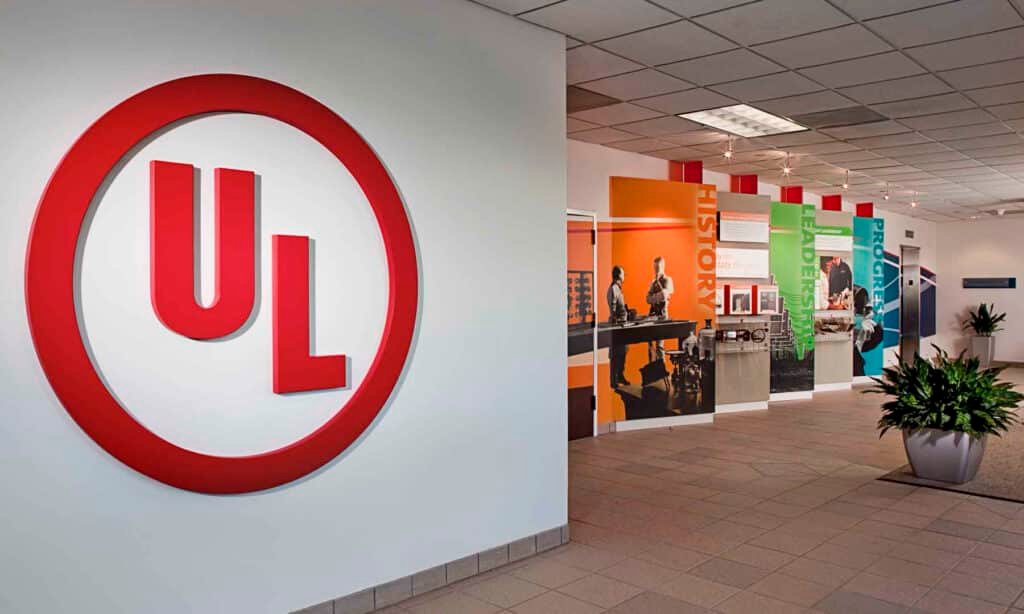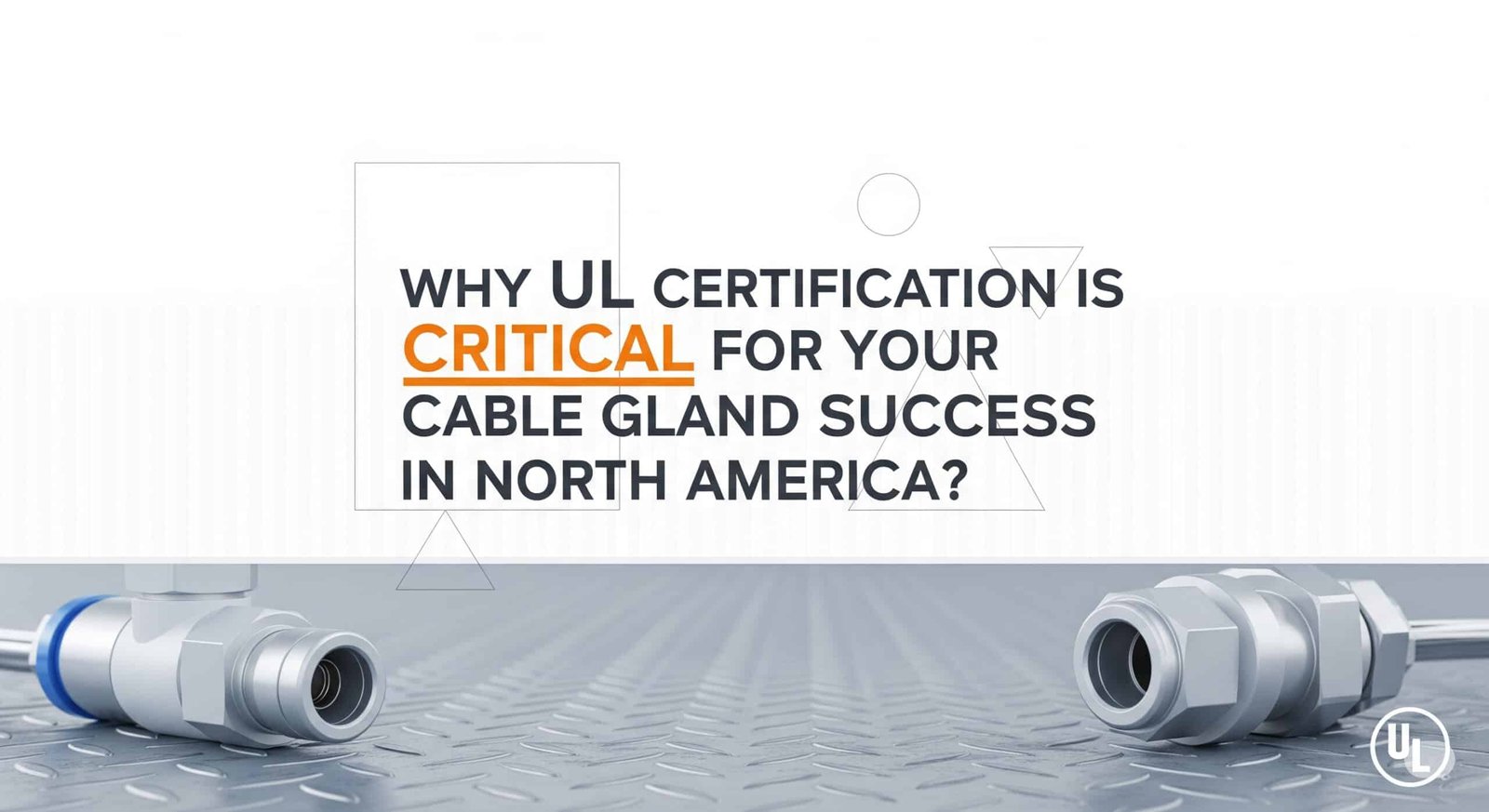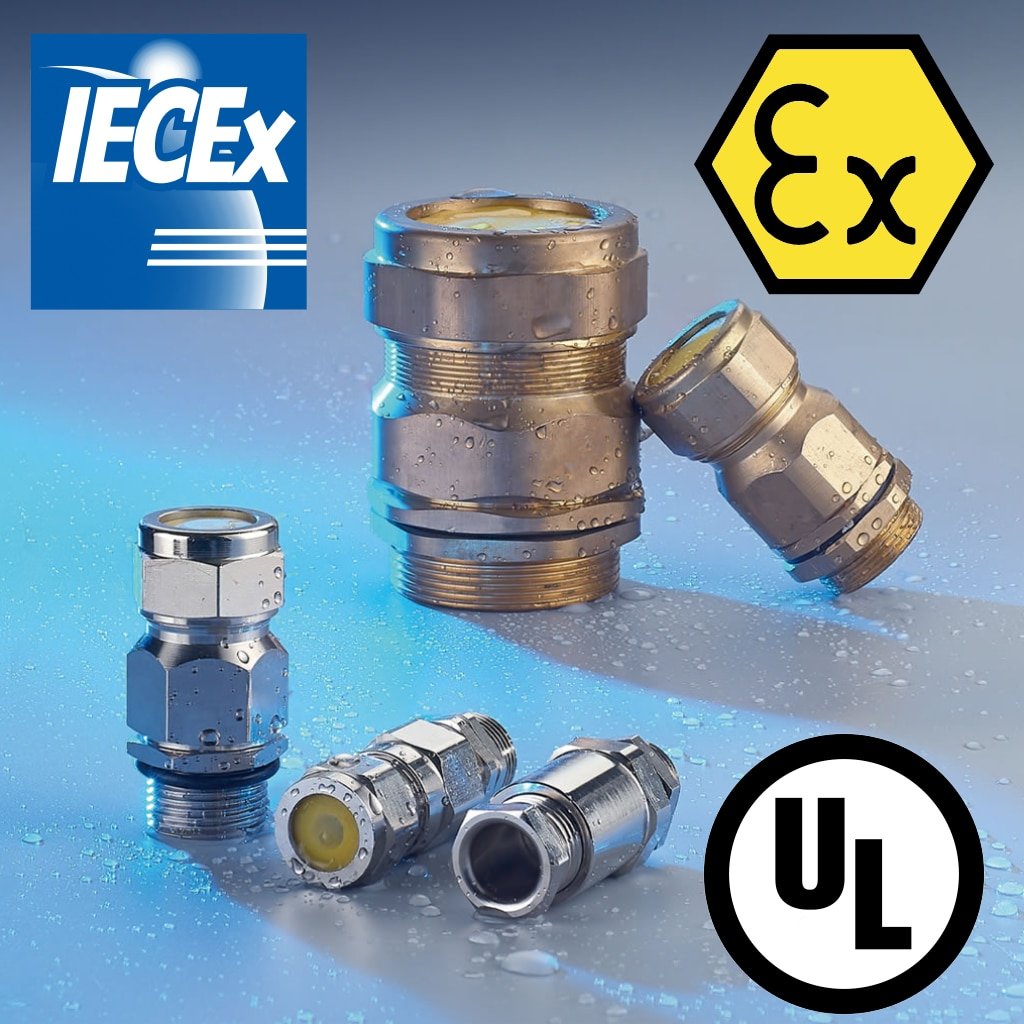Struggling to enter the North American market? Your cable glands might be perfect, but without UL certification, you’re locked out.
UL certification is mandatory for most North American electrical installations – without it, your cable glands cannot be legally installed in commercial, industrial, or residential projects, regardless of quality or price competitiveness.
Just last week, David, a procurement manager from a major US manufacturing company, called me frustrated. His previous supplier’s “high-quality” cable glands were rejected during inspection because they lacked proper UL listing. The project delay cost his company $50,000. 😉
Table of Contents
- What Makes UL Certification Different from Other Standards?
- Which UL Standards Apply to Your Cable Gland Applications?
- How Do You Navigate the UL Certification Process Successfully?
- What Are the Real Costs and Market Benefits?
What Makes UL Certification Different from Other Standards?
Understanding UL isn’t just about compliance – it’s about unlocking the world’s largest electrical market.
UL (Underwriters Laboratories)1 focuses on fire and electrical safety with rigorous testing protocols specific to North American electrical codes, making it fundamentally different from European CE or international IECEx standards.

UL’s Unique Market Position
UL operates as an independent safety science company that has been testing products for over 125 years. Unlike government-mandated standards, UL certification is:
- Market-driven: Required by electrical codes, insurance companies, and end users
- Liability-focused: Protects manufacturers, installers, and building owners from legal risks
- Continuously monitored: Ongoing factory inspections ensure consistent quality
Key Differences from International Standards
| Aspect | UL Certification | CE/ATEX | IECEx |
|---|---|---|---|
| Geographic Focus | North America | European Union | Global |
| Primary Concern | Fire & electrical safety | Explosion prevention | International harmonization |
| Installation Codes | NEC, CEC compliance | Local electrical codes | Varies by country |
| Marking Requirements | UL Listed mark2 | CE marking | IECEx certificate reference |
| Market Access | Mandatory for most applications | EU legal requirement | Voluntary but preferred |
North American Electrical Code Integration
The National Electrical Code (NEC)3 in the US and Canadian Electrical Code (CEC) specifically reference UL standards:
NEC Article 314: Outlet, Device, Pull, and Junction Boxes requires UL Listed products for most installations.
CEC Section 2: General Rules mandates that electrical equipment be approved by recognized testing laboratories like UL.
This integration means that electrical inspectors, contractors, and insurance companies automatically look for UL markings during installations and audits.
Real-World Impact Story
I remember working with Hassan, a facility manager for a petrochemical plant in Texas. He initially wanted to use his existing ATEX-certified cable glands to save costs during a plant expansion. However, the local electrical inspector immediately flagged this during the permit review.
The issue wasn’t quality – his ATEX products were excellent. The problem was code compliance. Without UL listing, the installation would violate local electrical codes, void insurance coverage, and potentially create legal liability for the company.
Solution: We provided UL Listed equivalents that met both his technical requirements and local code compliance, allowing the project to proceed without delays.
Which UL Standards Apply to Your Cable Gland Applications?
Choosing the wrong UL standard can derail your entire certification strategy and waste months of effort.
Most cable glands require UL 514B (Fittings for Conduit and Outlet Boxes) or UL 2225 (Cables and Cable-Fittings for Hazardous Locations), depending on your specific application and installation environment.
UL 514B: Standard Cable Gland Applications
UL 514B4 covers “Fittings for Conduit and Outlet Boxes” and applies to most general-purpose cable glands:
Scope Coverage:
- Threaded and threadless fittings
- Cable connectors and strain reliefs
- Liquid-tight flexible conduit fittings
- Cord grips and cable glands
Key Test Requirements:
- Pull-out strength testing
- Environmental sealing verification
- Temperature cycling performance
- Corrosion resistance evaluation
Typical Applications:
- Industrial control panels
- Motor control centers
- General machinery connections
- HVAC equipment installations
UL 2225: Hazardous Location Applications
For hazardous environments, UL 22255 “Cables and Cable-Fittings for Hazardous (Classified) Locations” becomes critical:
Enhanced Requirements:
- Explosion-proof construction verification
- Intrinsic safety compliance testing
- Dust-ignition-proof performance
- Increased safety (Ex e) validation
Classification System:
- Class I: Flammable gases and vapors
- Class II: Combustible dusts
- Class III: Ignitable fibers and flyings
- Division 1/2: Risk level classification
Application-Specific Standard Selection
For Industrial Manufacturing:
Most standard applications use UL 514B certification. This covers typical cable entry needs for:
- Machine control cabinets
- Distribution panels
- Motor junction boxes
- General industrial equipment
For Oil & Gas Operations:
Hazardous location installations require UL 2225 certification, particularly for:
- Refinery instrumentation
- Offshore platform equipment
- Chemical processing facilities
- Paint spray booth installations
For Marine Applications:
While UL doesn’t have marine-specific cable gland standards, UL 514B products with additional environmental testing often meet Coast Guard requirements for commercial vessels.
Standard Selection Decision Matrix
When David asks me which standard his cable glands need, I use this decision framework:
- Environment Assessment: Hazardous or general-purpose location?
- Application Review: What equipment will the cable glands connect?
- Code Requirements: What do local electrical codes specifically require?
- End-User Specifications: What does the customer’s specification document mandate?
At Bepto, we maintain certifications for both UL 514B and UL 2225 standards across our product range, ensuring we can meet diverse North American market requirements.
How Do You Navigate the UL Certification Process Successfully?
The UL certification process can make or break your North American market entry – one mistake costs months of delays.
Success requires choosing the right UL standard, preparing comprehensive technical documentation, working with experienced testing laboratories, and maintaining ongoing compliance through factory inspections.
Step-by-Step Certification Process
Phase 1: Pre-Application Preparation (2-4 weeks)
Before submitting to UL, we ensure complete readiness:
- Product design review against applicable standards
- Technical drawing package preparation
- Material specification documentation
- Manufacturing process documentation
- Quality system assessment
Phase 2: Application and Initial Review (1-2 weeks)
UL’s initial review focuses on:
- Standard applicability confirmation
- Test sample requirements definition
- Project timeline establishment
- Cost estimate finalization
Phase 3: Testing and Evaluation (6-12 weeks)
This is where most delays occur if you’re unprepared:
Mechanical Testing:
- Pull-out strength verification
- Thread engagement testing
- Sealing performance evaluation
- Environmental cycling tests
Electrical Testing:
- Dielectric strength verification
- Continuity testing (for grounding)
- Temperature rise evaluation
- Short-circuit performance (if applicable)
Environmental Testing:
- Salt spray corrosion resistance
- UV exposure testing (for outdoor applications)
- Temperature cycling performance
- Humidity resistance evaluation
Common Certification Pitfalls
From my experience helping manufacturers navigate UL certification, these issues cause the most delays:
Documentation Problems:
- Incomplete technical drawings
- Missing material certifications
- Inadequate manufacturing process descriptions
- Insufficient quality control documentation
Design Issues:
- Thread specifications not matching North American standards
- Sealing materials incompatible with UL requirements
- Marking and labeling non-compliance
- Packaging and shipping documentation errors
Testing Failures:
- Pull-out strength below requirements
- Environmental sealing failures
- Temperature performance issues
- Corrosion resistance problems
Factory Inspection Requirements
UL certification isn’t just about initial testing – ongoing compliance is mandatory:
Initial Factory Inspection:
- Manufacturing process verification
- Quality control system audit
- Testing equipment calibration check
- Personnel training assessment
Ongoing Surveillance:
- Quarterly or semi-annual inspections
- Random product testing
- Quality system maintenance verification
- Corrective action follow-up
At Bepto, we maintain our UL factory inspection compliance through:
- Dedicated quality assurance personnel
- Calibrated testing equipment
- Comprehensive documentation systems
- Regular internal audits
What Are the Real Costs and Market Benefits?
Understanding the full financial picture helps you make informed decisions about North American market entry.
UL certification typically costs $25,000-75,000 initially with $5,000-15,000 annual maintenance, but provides access to a $50+ billion North American electrical market with premium pricing opportunities.
Detailed Cost Analysis
Initial Certification Costs:
- Application and Review Fees: $3,000-8,000
- Testing and Evaluation: $15,000-45,000
- Technical File Preparation: $2,000-8,000
- Factory Inspection: $3,000-7,000
- Certificate Issuance: $2,000-7,000
Ongoing Compliance Costs:
- Annual Surveillance Inspections: $2,000-5,000
- Quarterly Follow-up Services: $1,000-3,000
- Random Testing Programs: $1,500-4,000
- Documentation Updates: $500-3,000
Market Access Benefits
Premium Pricing Opportunities:
UL Listed products typically command 15-30% higher prices than non-certified alternatives in the North American market.
Distribution Channel Access:
Major electrical distributors like Graybar, Rexel, and WESCO require UL certification for product line inclusion.
Project Specification Inclusion:
Engineering firms and contractors specify UL Listed products by default, ensuring consistent demand.
Insurance and Liability Protection:
UL certification reduces liability risks for manufacturers, distributors, and end users.
ROI Analysis Case Study
Let me share Hassan’s expansion project numbers:
Investment:
- UL certification: $45,000
- Market entry costs: $25,000
- Total investment: $70,000
Returns (Year 1):
- North American sales: $850,000
- Premium pricing benefit: $127,500
- Net profit increase: $200,000+
Payback period: 4.2 months
Market Size and Opportunity
The North American cable gland market represents significant opportunity:
Market Size: $2.8 billion annually (US + Canada)
Growth Rate: 6.2% CAGR through 2028
Key Segments: Industrial automation, oil & gas, renewable energy, data centers
Geographic Hotspots:
- Texas: Oil & gas, petrochemicals, renewable energy
- California: Technology, manufacturing, renewable energy
- Alberta: Oil sands, petrochemicals, mining
- Ontario: Manufacturing, automotive, technology
Without UL certification, you’re excluded from approximately 85% of this market opportunity.
Conclusion
UL certification opens North America’s premium electrical market – the investment pays back quickly through higher prices and broader access.
FAQs About UL Certification for Cable Glands
Q: How long does UL certification take for cable glands?
A: Typical timeline is 3-6 months from application to certificate issuance, depending on product complexity and testing requirements. Hazardous location products (UL 2225) generally take longer than standard applications (UL 514B).
Q: Can I sell cable glands in North America without UL certification?
A: While not legally prohibited, most electrical codes, contractors, and insurance companies require UL Listed products. Selling non-UL products severely limits your market access and creates liability risks.
Q: What’s the difference between UL Listed and UL Recognized?
A: UL Listed products are complete, end-use products ready for installation. UL Recognized components are intended for use within other UL Listed products. Cable glands typically require UL Listed certification.
Q: Do I need separate certifications for US and Canadian markets?
A: UL certification covers both US and Canadian markets through harmonized standards. Products receive dual UL/cUL marking, providing access to both countries with a single certification.
Q: What happens if my UL certification expires or is suspended?
A: Expired or suspended certifications immediately prohibit product sales and installations. Distributors will stop purchasing, and existing inventory may need to be recalled. Maintaining ongoing compliance through factory inspections is critical.
-
Visit the official UL Solutions website to learn about their safety science mission and certification services. ↩
-
Understand the difference between the various UL marks (Listed, Recognized, Classified) and what they signify for product safety. ↩
-
Explore the official page for the NEC, the benchmark for safe electrical design, installation, and inspection in the United States. ↩
-
Review the scope and requirements of the UL standard for fittings, conduit, and cable glands for electrical installations. ↩
-
Learn about the UL standard for cables and fittings intended for use in hazardous (classified) locations. ↩



